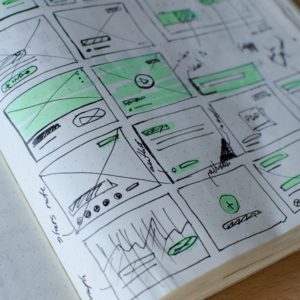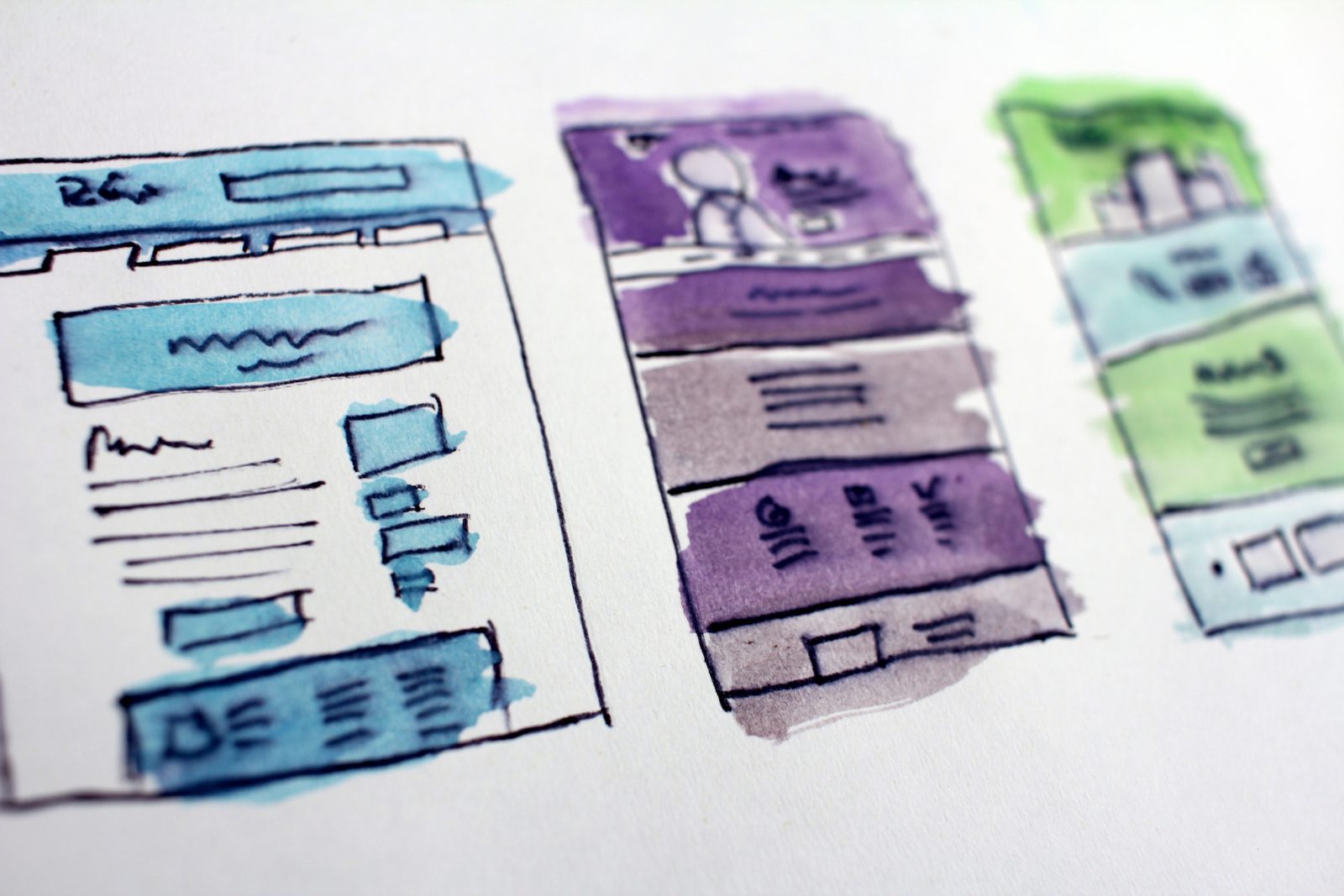In today’s digital age, a website is critical to the success of any business. It is an integral part of any online digital strategy. Here at Jiggle Digital we build lots of successful websites and as such, have lots of website design tips to share.
Think about it: how was your opinion of a company, organisation, or individual shaped by what you saw on their website? Chances are if they had a great-looking website that offered excellent user-experience, you trusted them. Perhaps you even gave them your business.


Website Design Evolution
Website design and online business strategies are constantly changing. For example, static web pages were popular several years ago. Now, infinite scrolling websites are the new normal today. Modern websites are also generally more minimalist, allowing the end user to enjoy a seamless experience whether they are just reading content or signing up for a newsletter.
Therefore, it goes without saying that it’s important for any business to keep their website up to date to meet consumers’ need for a memorable and hassle-free browsing experience.
In this article, you will learn website design tips from our experts that you may not know about. We’ll consider what makes for a bad website, the characteristics of a good one, a few of our own secrets, and how updating or getting a better website can impact your business.
Characteristics of A Bad Website
Whilst individuality in website design can set you part from the crowd, there are certain best practices to be aware of. Below are some major website design disasters that will turn most visitors away from your website.
Poor Design
One aspect of poor website design is a lack of visually appealing elements, such as professional photography and attractive fonts. Users are likely to stay longer on the site if they like what they see.
Poor navigation not only lowers a site’s search rankings but also causes you to lose potential business. Customers typically abandon a poorly organized website within seconds of landing on the site. You can easily check your website bounce rate if you have analytics on your site to identify if visitors are leaving quickly.
There are other common design elements that can make for a bad user experience. These include side-scrolling and the use of too many frames, excessively large images and incompatibility with major browsers.
Out-of-Date Content
Old, out-of-date, irrelevant, or missing content on a website is a big red flag. Don’t think that visitors won’t notice this. Users first visit a website before they can make a purchase decision. They will abandon a website when they cannot find quality, up-to-date content.
However, content alone is not enough. A website whose content is not well optimized will not attract the necessary traffic and leads your business needs.
Lack of Contact Information
In spite of the widespread use of social media, users still go to websites to find a business’s contact information. If people cannot get in touch with you or locate you easily, they will be reluctant to do business with you.

Another overlooked element is Google Maps. Many customers use their mobile phones to find local businesses. Google Maps is the go-to tool they use to get around. If local business is important to you, not having a map will have a negative impact on your local business listing on Google and can cost you customers.
Clutter
Consumers are busy and don;’t want to slog through unnecessary design elements and features to find what they are looking for. Too many images, adverts, links, page view counters, videos and general clutter all make for poor user experience. Even worse, they will slow down your website. A slow website will rank lower in the search engines so you’ll get fewer visitors. If upon first glance, the website feels overwhelming, users will leave immediately. Today, simplicity and creativity is the name of the game.
Too Salesy
Your website is a core part of your business. However, bombarding visitors with endless sales messages is bad practice, especially if this is the first time they are coming to your site. In most cases, your aim should be to effortlessly drive visitors deeper into your website content. This will give them the opportunity to make a purchase or enquiry when they are ready.
Slow Loading Speeds
A slow-loading website is everyone’s pet peeve. In a fast-paced world, consumers have shorter and shorter attention spans. Excessive loading times are a sure way to send customers to your competitors with better, faster, and more efficient websites.
Lack of Mobile Optimisation
With more than 80 percent of users owning a smartphone, a mobile responsive and optimised website is a must-have. Consumers still make the final purchase or conversion on a desktop computer. However, for now the first point of contact they have with your brand is usually via their mobile devices. If users do not like what they see on mobile, chances are they will be less inclined to follow through and will instead opt for a competitor brand.
High Barrier to Check Out


Boring and Uninspiring
We’ve all seen website design that is unoriginal and looks like every other website out there. Surprisingly, many website designers aren’t too original and will simply use the same template on every website design they create. After all, if it looks the same as all the other sites it must be good, right? Design by its nature involves creativity, passion and originality. If you are not seeing originality or creativity in your website designer or agency then maybe it’s time to look elsewhere. Creativity and great design will set you apart. As a rule, the cheaper the website design, the less time spent on it and the less custom or original it is likely to be. There is a reason why successful brands invest heavily in good website design – because it gets them results.
Website Design Tips to Build A Better Website
Now you know what makes for a poor website design, let’s consider good website design. A great website does two important things: It considers the needs of your target customer and helps you realise your business goals.
Here’s what our expert team believe makes for a good, solid website:
Ease Of Use


A good website is one that engages and retains visitors with the aim of converting them from mere browsers to actual buyers.
Website designers can achieve ease of use by:
- Building a website with a clear and navigable homepage that serves up information easily
- Using easy to read texts and fonts
- Including professional and well-optimized visuals
- Cutting out unnecessary features from the homepage and all other pages
Modern and Original
[easy-tweet tweet=”Website design keeps evolving to meet the ever-changing needs of consumers. Updating your website to reflect modern design trends can be a great way to improve user experience.”]
Some of today’s modern trends include:
- Minimalism: A website with minimal elements is much easier for users to navigate and is more visually appealing. Such a website also loads faster, allows visitors to zero in on your content, and can improve conversions.
- Typography: With so many web fonts to choose from, typography has become a way for companies to differentiate their brand and engage the quirks of their target audience. Large, clean fonts can transform the look of your website in a big way.
- Infinite Scrolling: Gone are the days of static website pages. A current website design trend is infinite scrolling that allows users to access all the information they need on a single page containing visually appealing images, fonts, and interactive features.
- Videos and Images: Video is one of the biggest internet trends. Businesses, large and small, are using this medium in a carefully considered way to engage visuals-hungry customers.
While you do not have to incorporate all these elements, modernising your website could be just the boost your business needs in an increasingly competitive marketplace.
Made For Mobile
In a mobile-first world, one of the best ways to improve website performance and nurture site visitors further down the sales funnel is to make your site mobile-ready.
Several options are available to make your website more accessible to mobile device users. Some options deliver better results.![]()
![]()
First, there is the mobile-friendly website. This is a website built for desktop but is compressed when viewed on a mobile device. The problem with a mobile-friendly website is that it does not offer the functionality, seamlessness, and ease of use that mobile users require. For example, the text might be too small or the pages too fragmented to offer a worthwhile browsing experience.
A more improved version of your website can utilise a mobile-first design. Such a website would be built specifically for a smartphone audience. The downside is that the website may display poorly on other devices such as laptops or tablets.
Responsive Website Design
Responsive mobile design is a better option overall. A mobile responsive site is not made for mobile only but rather will reformat itself in response to the device a visitor uses to access your website.
A mobile responsive site considers the archetypical customer journey in which visitors use different devices from the moment they discover your brand to the point of purchase.
This type of website not only offers maximum readability, but it is also easier to use and has shorter load times, all of which improve user experience.
Faster Loading Speeds
A fast-loading website is not just pleasant to use; it also has some real implications for your business.
[easy-tweet tweet=”Users expect a website to load quickly. Every one-second delay reduces website conversion rates by a whopping 25%. This means your business could potentially lose a lot of money due to a slow-loading website.”]
Fortunately, you can boost the performance of your website and therefore maximise those conversions. A good web designer or digital agency will be able to create a fast loading website.
One thing you should be able to control is your choice of web hosting provider. Opt for powerful and reliable hosting that can support all your website’s functions with as few hitches as possible. At Jiggle Digital we offer managed hosting to client’s and this provides the very best results and uptimes. Your website designer or digital agency may do the same. If you have have an in house team managing your website, there are other companies that offer good quality hosting.
Engaging Content


In the age of social media, it may seem like web content should no longer be a priority. This is a common misconception. Social media platforms and your website serve distinct functions throughout the consumer journey and all form part of an overall digital strategy.
More importantly, you own your website and have control over how to offer your content and how to interact with potential customers. The same cannot be said of social media.
So, as you invest in creating content for social media, do the same for your website. A great place to start is incorporating a blog into your website if you do not have one. Update your blog regularly with rich and relevant content to engage site visitors, establish credibility, and build thought leadership in your niche.
Seamless Conversion
Whether you want visitors to sign up for a newsletter, download an ebook or product, or buy a service, if you want to increase conversions, you must make the process as easy as possible.
Some quick solutions you can implement are:
- Eliminate unnecessary pages and steps (For example, in the above image you can download our Website Client Guide simply by clicking the image).
- To minimise bounce rates, be transparent about things like shipping costs
- Do not force visitors to sign up for an account as a condition for checking out
- Make it easy for visitors to jump back in from where they left the process
- Ask only for the most important information
- Give various payment options
- Guarantee users that their information is safe
- Consider shopping cart abandonment tactics to bring customers back to the site
Benefits of Improving Your Website
A website is never a set and forget job. Keeping it up to date is imperative to the success of your business.
Some key benefits of improving your website include:
- Build credibility and trust among site visitors with up to date content
- Create a strong and memorable brand image with a modern website design
- Publish valuable content that sets you apart as the go-to expert in your niche or industry
- Keep your website and visitor’s information secure
- Adapt to the needs of your visitors and improve conversions by making your website mobile responsive
- Improve engagement and customer retention with faster load speeds, quality design, and seamless checkouts
Website Design Tips
There is no doubt that a functional, user-friendly, and professionally built website is the cornerstone of every business. The best part is that a website, unlike your social profiles, is owned media, which gives you full control over your brand, communication with customers, content, and conversion strategies.
Just as you take good care of your valued possessions, you should invest in a website. Make sure it makes a first good impression for your business. And the payoffs are massive—visitors are likelier to trust you. With trust comes customer loyalty and a willingness to do business with your brand.






Leave a Reply